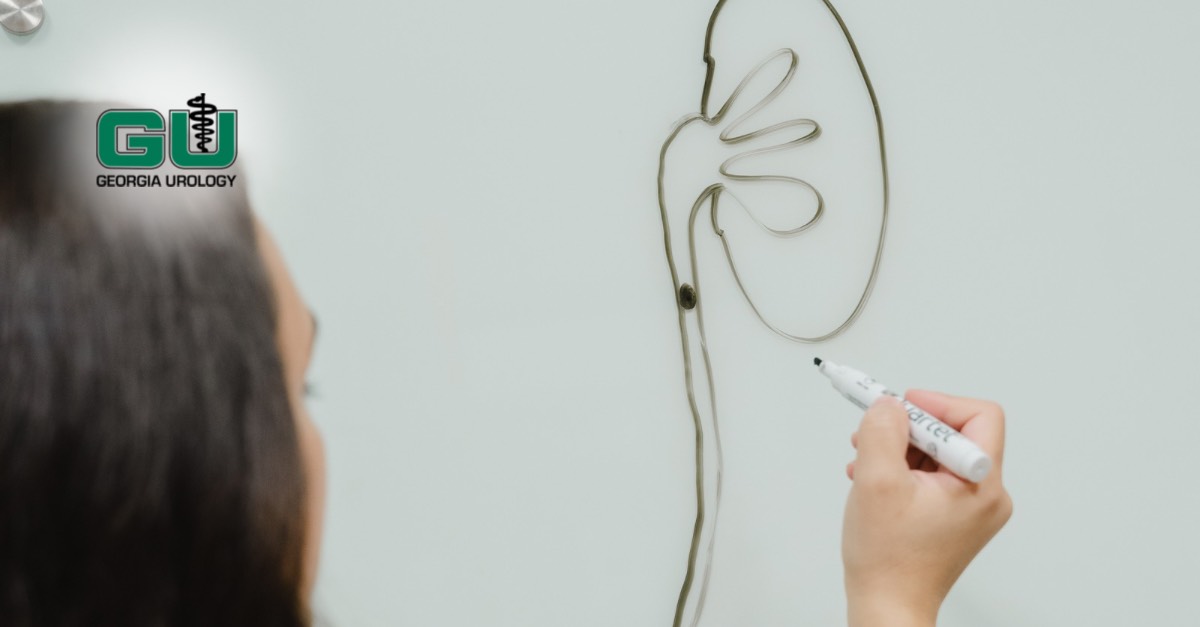Cranberry Juice and Four Other Myths About Kidney Stones
As it relates to kidney stones, there are quite a few misconceptions that patients should understand so that they seek appropriate treatment for their symptomatic kidney stones. Unfortunately, because of these misconceptions, some patients do not take kidney stones as seriously as they should. So, let’s set the record straight and give you the decision-making tools to get the appropriate treatment.
Myth #1: Cranberry Juice Prevents Kidney Stones.
Not only is this a myth, but there is some evidence to show that cranberry juice may promote the development of kidney stones. However, there are some important lessons we can learn from this myth. First is hydration. Staying well-hydrated is the most important thing you can do to prevent kidney stones. Why? If plenty of water flushes through the kidneys, there is less time for stone material to bind and form a larger stone.
Also, a diet rich in citric acid can be helpful for kidney stones. Does adding a little lemon to your water help? Not really. A little lemon will not do much to keep stones at bay, though if that makes you drink more water, you certainly will reap the benefits.
On the other hand, drinking a very concentrated lemon-based concoction (using natural lemons, not mix) could be beneficial. However, it won’t be very palatable, and you may risk tooth damage from the acid wash.
Conclusion: Stick to water.
Myth #2: Kidney Stones Themselves Cause Pain as They Pass.
There’s some nuance to this, of course, mainly because most consider kidney stone pain the worst they’ve ever felt. But is it the stone itself causing the pain? Not really. Some of us flush out kidney stones regularly. These stones are so small that we don’t even recognize their existence.
Also, many kidney stones that remain in the kidney are asymptomatic and do not cause pain. That is, unless the stone gets so large that it impedes kidney function. And, yes, we’ve seen kidney stones that take up most of the kidney area.
When a kidney stone moves into the ureter and becomes lodged there, creating a blockage, it can be very painful. In other words, it’s less often the stone that hurts but rather the blockage and distention it causes.
You may have seen microscope images of a kidney stone that made it look jagged. Despite this trait, the edges are generally too small to cause pain.
Myth #3: Kidney Stones Will Hurt as I Pee Them Out
Once again, the pain associated with a kidney stone happens when it gets lodged in the ureter. The urethra (albeit spelled similarly) is a decidedly different structure with a much wider diameter. As such, if the kidney stone has already passed through the ureters, it will have no problem exiting the body pain-free through the urethra.
Myth #4: Once Kidney Stone Pain Disappears, I’m Free and Clear.
You may experience the debilitating pain associated with kidney stones only to see it reduce significantly or disappear. But, without making lifestyle changes, you remain at a heightened likelihood of developing kidney stones in the future. Even if the kidney stone has passed, and it may not have, you have a 50% chance of experiencing a subsequent kidney stone in the future, especially if you don’t modify your hydration habits.
Myth #5: EWSL Was Successful, so I’m Stone Free!
ESWL, or extracorporeal shockwave, is a non-invasive kidney stone treatment option that pulverizes kidney stones using shockwave therapy generated from outside the body. While this option does a good job of breaking down kidney stones, it does not guarantee a stone-free future. As Dr. Song, one of our kidney stone specialists, likes to say.
“Stones beget stones, and fragments or material that isn’t passed is a magnet for additional stone development. Be sure to talk through all your options with your urologist so that you choose the best procedure for your circumstance.”
Of course, there are plenty of other misconceptions, most of which can be resolved with a simple visit to your urologist.
Typical Treatment of Stones by Size
- For stones under 4 mm, we typically look for our patients to pass them by increasing their water intake.
- For 5 to 10-mm rocks, a discussion with your urologist will determine whether to proceed with treatment or wait until the stone becomes symptomatic.
- Above 10 mm, however, patients will likely experience discomfort in the future and will likely eventually have a complication associated with their kidney stone. These stones are almost always treated using one of several methods.
Patients with a solitary/single kidney may need a modified kidney stone treatment plan.
While we understand that going to your urologist may be a hassle or nerve-racking, we also want to stress that most kidney stones are treated using conservative and minimally or non-invasive options. From passing the stone naturally by increasing your water intake to shockwave therapy (ESWL) and ureteroscopy with laser lithotripsy, most stones are swiftly pulverized and passed, giving patients long-term relief. PCNL or percutaneous nephrolithotomy may be needed for more complex or larger stones.
As such, we encourage patients to call our kidney stone hotline at 855-786-6311 and get an expedited appointment for appropriate treatment.



